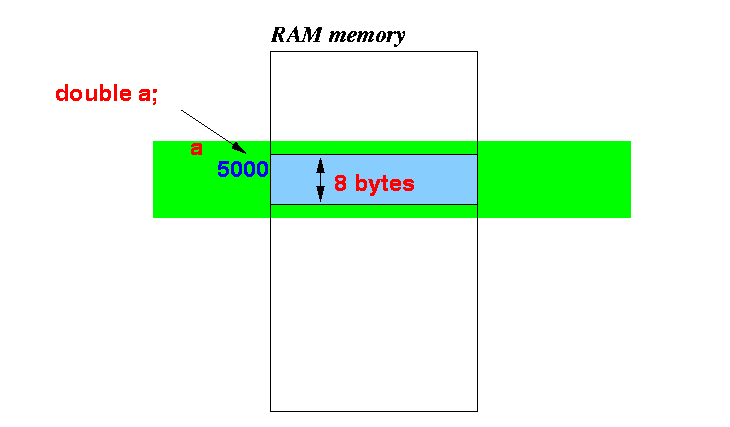- Previously I said that:
- Declaring a variable = inform the C compiler about the data type of a variable
- Actual goal
of a declaration:
- Provide sufficient information to the C compiler to access the variable in memory.
- Information needed to
access a variable:
- Location of the variable in
memory
- Number of bytes (= size) the comprises the variable.
Example:

- Location of the variable in
memory
- How the information is
conveyed to the
C compiler:
- The location information is
recorded by the
C compiler when the variable is
defined
(and memory cells are reserved in memory to store that variable)
- The size information is conveyed to the C compiler through the data type in the variable definition or variable declaration.
- The location information is
recorded by the
C compiler when the variable is
defined
(and memory cells are reserved in memory to store that variable)
- How the C compiler works:
- During the compilation
(translating C statement to
machine code), a
variable definition will
cause the C compiler to
reserve memory cells (record address)
and remember the type (size info)
- During the compilation
(translating C statement to
machine code), a
variable declaration will
cause the C compiler to
generate a dummy address for that
variable name
and remember the type (size info)
All the dummy addresses generated in the compilation phase is filled in during the linking process where information from multiple C program files are merged
- The C compiler must locate the location of every declared variable and replace the dummy address with the actual location of the variable found in the file where the variable was defined.
- During the compilation
(translating C statement to
machine code), a
variable definition will
cause the C compiler to
reserve memory cells (record address)
and remember the type (size info)